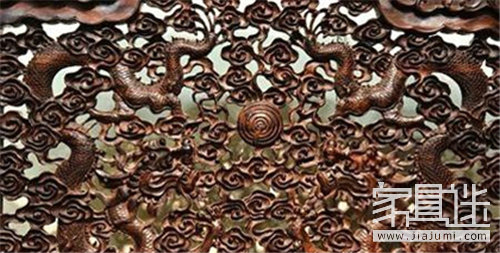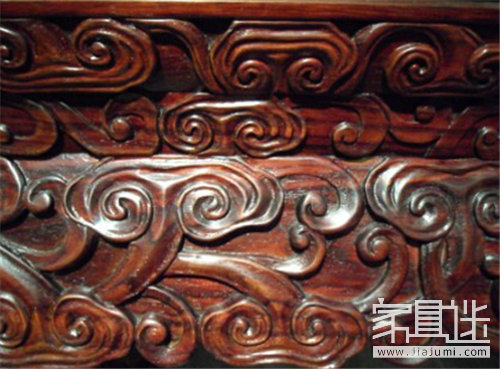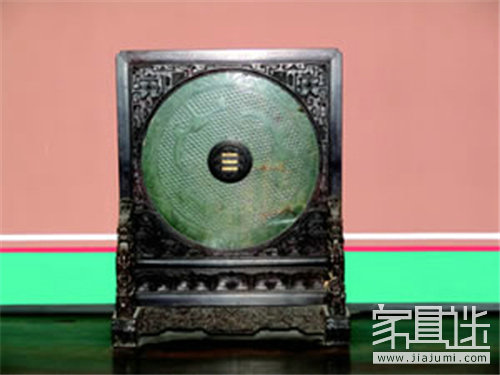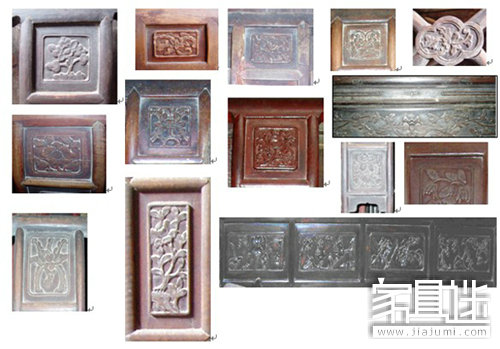Ming-style furniture carving is a remarkable representation of traditional Chinese sculpture art. The carvings cover a wide range of themes, including landscapes, mythical creatures, birds, animals, floral patterns, ancient artifacts, Western motifs, and auspicious symbols. These designs are rich in meaning and visual appeal, making them a fascinating subject to explore. Why not take a closer look at one example?

If you observe closely, you'll notice that there are clear artistic principles behind the designs. In terms of major categories, there are four primary types of carved patterns:
**(1) Birds and Beasts:** This category includes dragons, phoenixes, cranes, magpies, and other symbolic creatures. Many of these were chosen for their cultural significance and aesthetic value, especially dragons and phoenixes. The dragon, as a totem of the Chinese nation, represents power, strength, and vitality. It was often used as a symbol of the emperor in ancient times, appearing on furniture reserved for the royal family. The phoenix, known as the "king of birds," is associated with peace and prosperity. The creatures seen in Ming-style carvings reflect the influence of earlier dynasties, such as the Han and Wei-Jin periods, where large, bold, and expressive styles were common. Their presence evokes the grandeur of ancient stone carvings and the elegance of historical artifacts like the Wuwei bronze horse.

**(2) Auspicious Flowers and Figures:** These patterns include peonies, lotus flowers, plum blossoms, and more. The tradition of using auspicious floral motifs dates back to the pre-Qin era and flourished during the Tang Dynasty, when they were deeply influenced by painting styles of the time. The Ming-era carvings inherited this legacy, emphasizing richness, fullness, and boldness. The figure patterns often tell stories or depict scenes, adding narrative depth to the design.

**(3) Antique Decorations:** This category features imitations of ancient bronzes, jade ornaments, and other historical artifacts. During the late Ming and early Qing dynasties, there was a growing interest in antiquity, leading to the popularity of "Bogu" (antique) patterns. These motifs were commonly found on rosewood furniture, where the carvings were intricate and reflected a refined sense of aesthetics. They brought a sense of history and cultural depth to the pieces.
**Related Reading:** The story of Ming-style furniture and its connection to the Ming Dynasty

**(4) Western Motifs:** During the reign of Emperor Kangxi of the Qing Dynasty, Western artists were invited to the imperial court, bringing new influences into Chinese art. This led to the integration of Western decorative elements into traditional Chinese furniture. One prominent motif was the passionflower, which, in Western culture, holds a similar symbolic role to the peony in China. Unlike the peony, however, it often appears more stylized and abstract in design.
Understanding the essence of Ming-style furniture carving reveals its deep roots in traditional Chinese art, as well as its connections to other crafts of the same period. These carvings not only reflect the luxurious lifestyle of the imperial court but also express the refined tastes of scholars and the everyday aspirations of common people for peace and happiness.
We are manufacturer and supplier of Stainless Steel Sugar Bowl,Sugar Bowl,Sugar Canister,Sugar Jar,Sugar Container. And we located in Jiangmen, Guangdong, China. If any interested, please contact us for free.
Stainless Steel Sugar Bowl,Metal Sugar Bowl,Sugar Canister,Sugar Jar,Sugar Container
Jiangmen Xinhui Zhancha Metal Products Co,. Ltd. , https://www.zchardware.com